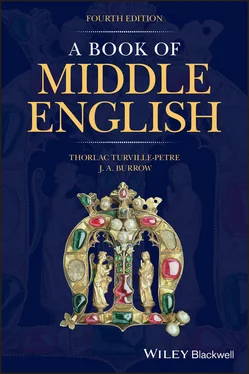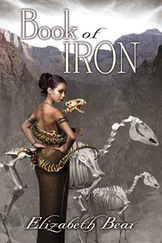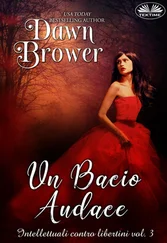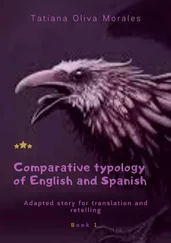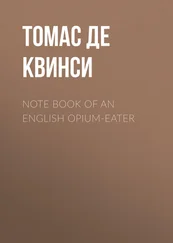4 Inflexions
4.1 Introduction
4.1.1 The Inflexional System
The inflexions of a word are its changes in form to express grammatical function and meaning. Some classes of word have preserved their system of inflexion better than others in Modern English; verbs, for example, distinguish tense , past from present, and third person (e.g. ‘goes’) from other persons; nouns distinguish number , singular from plural. The inflexional system to distinguish case has for the most part been greatly simplified. In Modern English, distinct case‐forms survive best in personal pronouns: e.g. he , his , him ; where he is the subject (‘nominative’) form, his the possessive (‘genitive’) form, and him the object form, used for the direct object of verbs, the object of prepositions (as in ‘with him ’), and the indirect object of verbs (as in ‘I gave him the book’). Old and Early Middle English pronouns commonly distinguish two object forms: the ‘accusative’ for the direct object of verbs (as in hine bilæfde , ‘left him’, 3/3); the ‘dative’ for the indirect object (as in him is loþ , ‘is hateful to him’, 2/194), and for the object of many prepositions. The distinction between accusative and dative forms is generally lost early in the Middle English period so that a single object case remains, as in Modern English.
4.1.2 Loss of Inflexional Endings
By comparison with Modern English, Old English was highly inflected. In Late Old English there was a gradual loss of distinctiveness in inflexional endings and short vowels in unstressed syllables were progressively simplified, until by the eleventh century in most dialects they had all been reduced to one, usually written e , and sounded as /ə/ (the final sound of Modern English ‘China’). In addition, the dative ending ‐um had in Late Old English become /ən/, which in Middle English was written as ‐en . These early sound‐changes had profound consequences for the system of inflexions as well as for the distinctions in grammatical gender that depended upon that system.
Two rather later sound‐changes that had further effects upon inflexions were the loss in unstressed syllables of final ‐n after ‐e , and then the loss of final ‐e itself. To take as an example the infinitive of a verb: drincan in Old English became drinken in Early Middle English (as in 4/68), then drinke , and finally drink . This last stage was reached during the thirteenth century in parts of the North, and had probably extended to the whole country by the beginning of the fifteenth century, although the situation is obscured by the tendency of later scribes to add final ‐e when it was not sounded.
The process of change and simplification advanced at very different rates in the various dialects of Middle English. The earliest Middle English texts of the North and East already have a system of inflexions radically different from that of standard written Old English, while the dialects of the South and West were much less innovative, no doubt partly because they were less sharply brought up against the language of the Scandinavian settlers. These variations in the pace of development are strikingly illustrated by a comparison of the earliest of our texts, the mid‐twelfth‐century Peterborough Chronicle from the North‐East Midlands (text 1), with three late twelfth‐ and thirteenth‐century texts from the South and from the South‐West Midlands, The Owl and the Nightingale , Laʒamon’s Brut and the Ancrene Wisse (texts 2–4). In very many respects the language of these latter works is much more conservative than that of The Peterborough Chronicle , and represents a transitional system undergoing a process of simplification and loss that was already well advanced in the North and East.
4.2 Nouns
4.2.1 Introduction
The blurring of vowels in unstressed syllables had consequences that may clearly be seen in the noun inflexions. The system in Old English was complex, with differentiation possible between gender, case, and strong and weak classes. So the nominative plural of nouns might be marked by ‐as , ‐u , ‐a , ‐e , ‐an or no ending at all, and other endings distinguished one case from another. With the falling together of unstressed vowels, the whole variety of inflexional endings was reduced to ‐e , ‐es , ‐en and ‐ene . In practice only those forms ending in a consonant, ‐es and ‐en , were sharply distinctive, and therefore they were useful as grammatical markers, to indicate possession and to distinguish the plural. The ending ‐es was the marker of the genitive singular of the Old English strong masculine nouns; it was the most distinctive of all the endings in the singular, and in Middle English it became generalized to serve as the ending for the genitive of the great majority of nouns, and indeed the only singular inflexion that regularly survived. Similarly the ending ‐as , the nominative and accusative plural ending of Old English strong masculine nouns, developed into ‐es in Middle English, and in many dialects became the usual way of marking the plural. Southern dialects, on the other hand, preferred the ‐en ending of the plural, derived from the Old English weak plural ending ‐an , and extended this ending to nouns that historically had other endings, as in shon , ‘shoes’ (OE plural scōs ), and sunnen , ‘sins’ (OE plural synna ). These endings, either ‐es or ‐en , were then extended throughout the plural, until there was no distinction of case there.
In this way the modern system of noun inflexions was reached, with distinctions in form only between singular and plural, and between the genitive singular and the other cases of the singular. (The use of an apostrophe to mark the genitive singular and genitive plural is a written convention regularized in the eighteenth century.) The concept of grammatical ‘case’ had thus been all but eliminated in the nouns, and grammatical function in Middle English is instead indicated by relatively fixed word‐order and the greatly increased use and variety of prepositions. A further consequence of the reduction of distinctive noun inflexions is that there is no longer any indication of grammatical gender except sometimes in the accompanying articles and pronouns. In Early Middle English grammatical gender survives to a limited extent (see 5.1 below); soon, however, natural gender takes its place; that is, the gender of pronouns and the like is determined not by the grammatical gender‐class of the nouns to which they refer, but by the natural distinction between human male, human female, and non‐human.
4.2.2 Noun Inflexions: Early Southern Texts
The system of noun inflexions is one of considerable variety during the Early Middle English period, particularly in the dialects of the South and the South‐West Midlands (texts 2, 3 and 4 in this book). Two basic patterns may be disentangled, principally derived from (a) OE strong masculine nouns (e.g. engel ), and (b) OE weak nouns (e.g. nama ). The first pattern has no ending in the nominative and accusative singular, ‐es in the genitive and usually ‐e in the dative; the plural is marked by ‐es , often throughout, although the genitive plural sometimes ends in ‐e or ‐ene , and the dative plural sometimes in ‐e . The second pattern has ‐e throughout the singular, and generally ‐en throughout the plural. Note that in neither pattern is the accusative distinguished from the nominative. As typical paradigms we may set out engel , ‘angel’, as an example of the first pattern, and nome , ‘name’, as an example of the second:
Читать дальше
